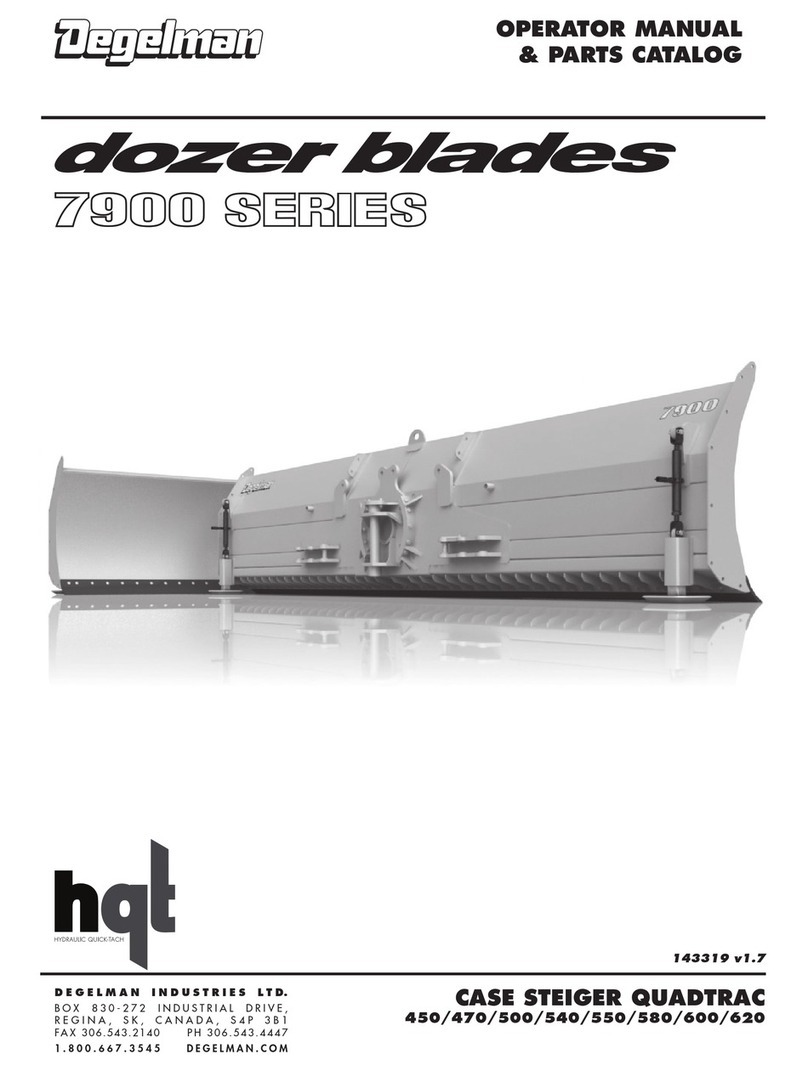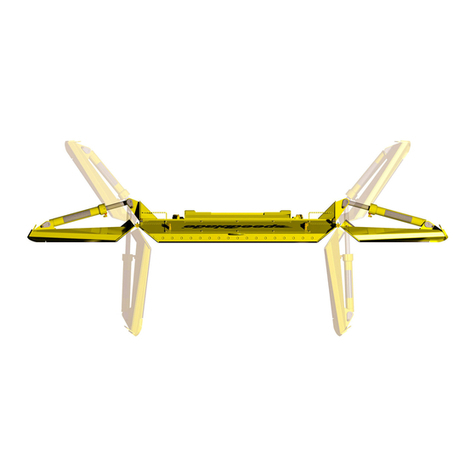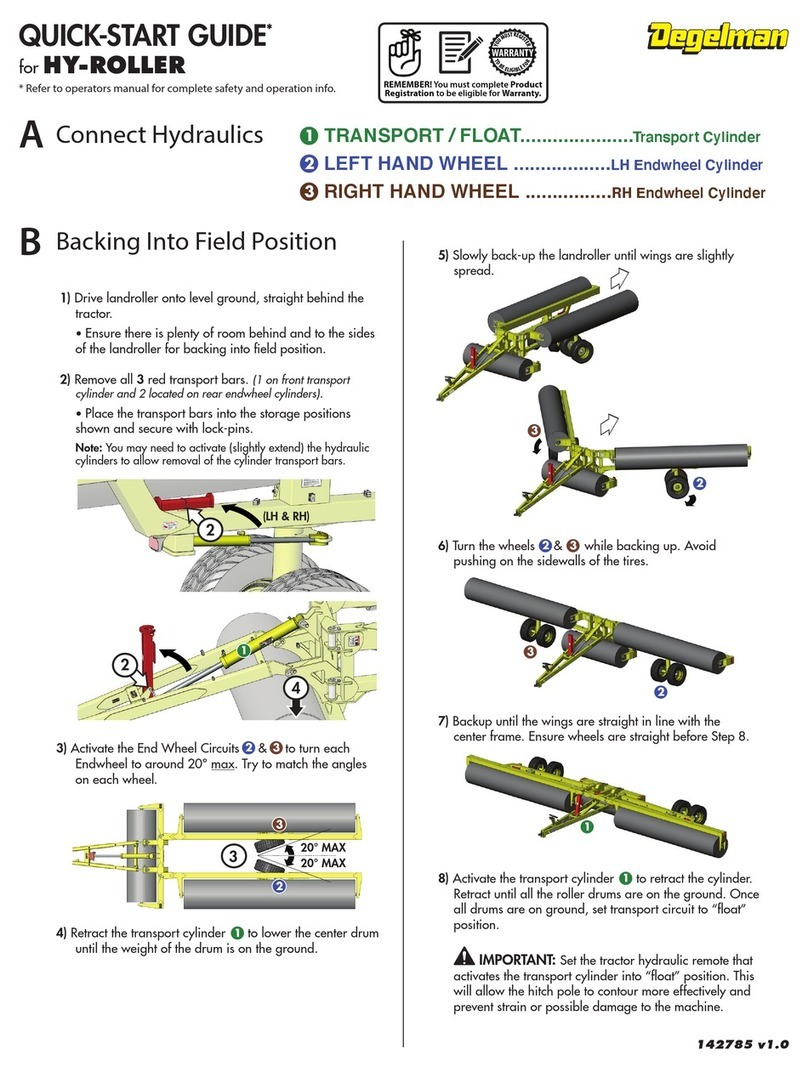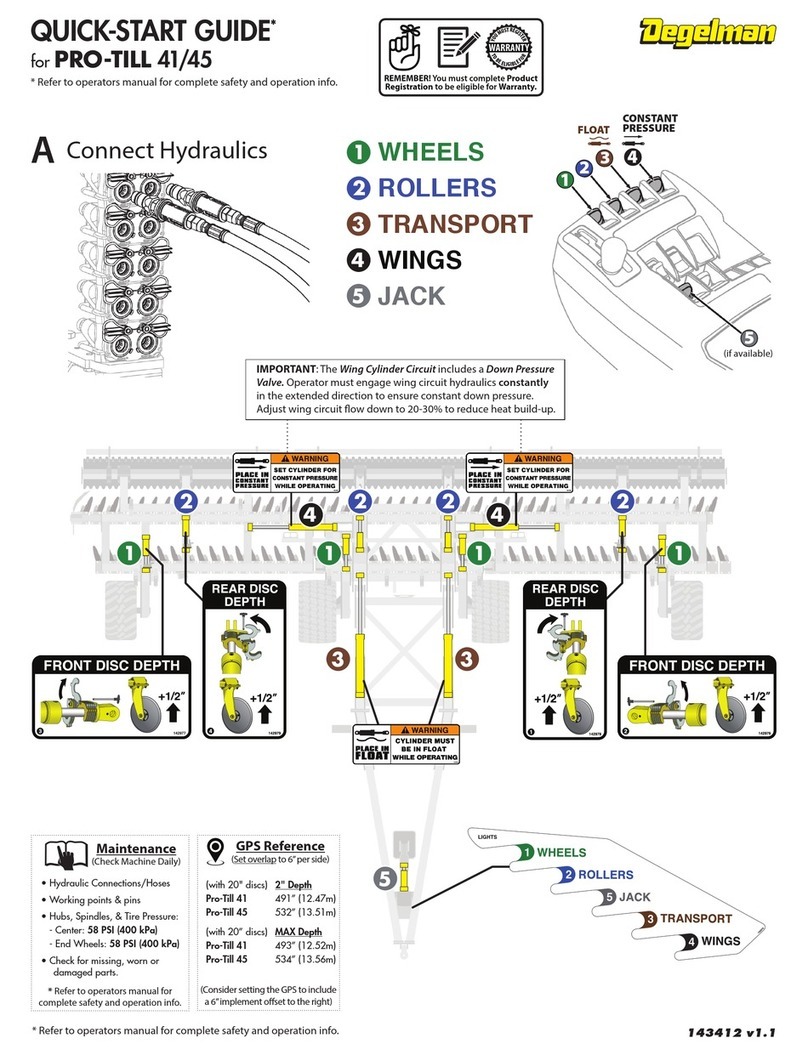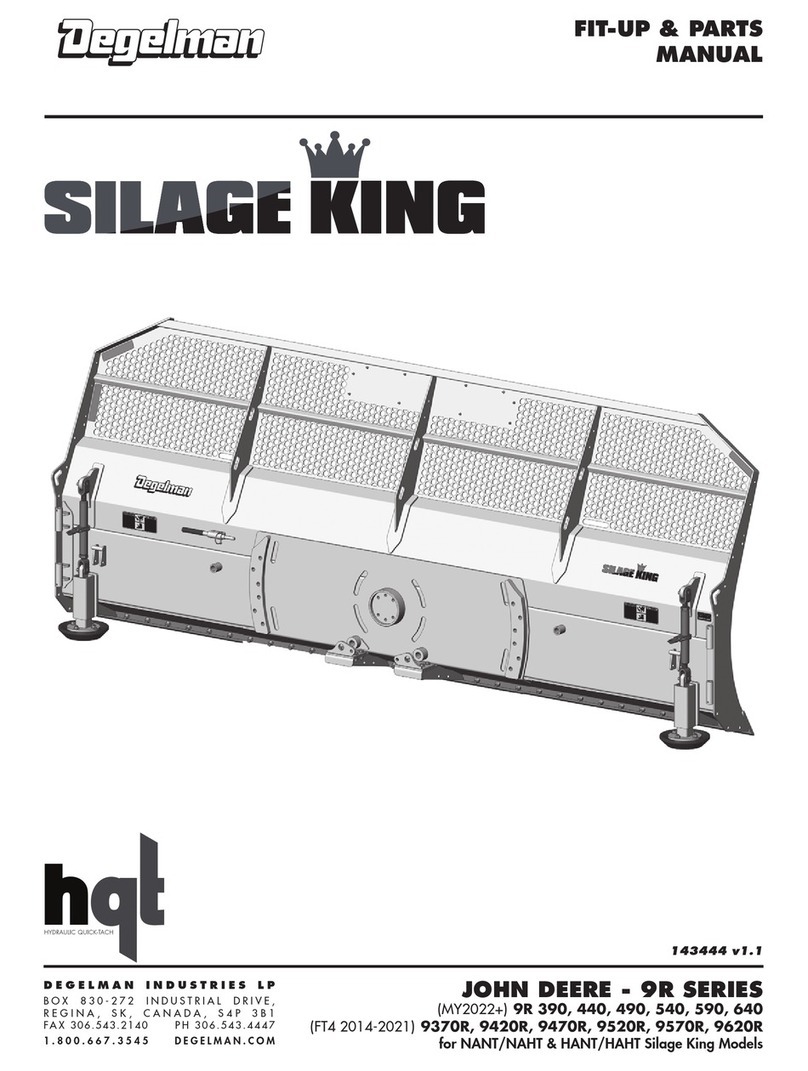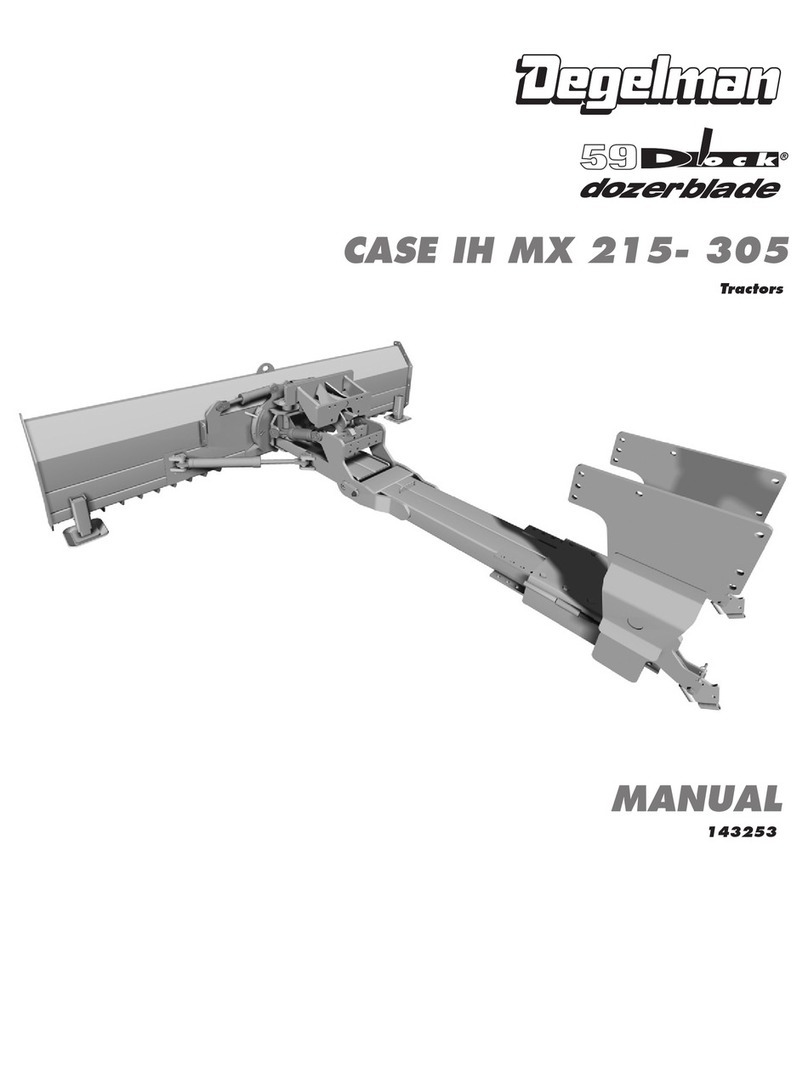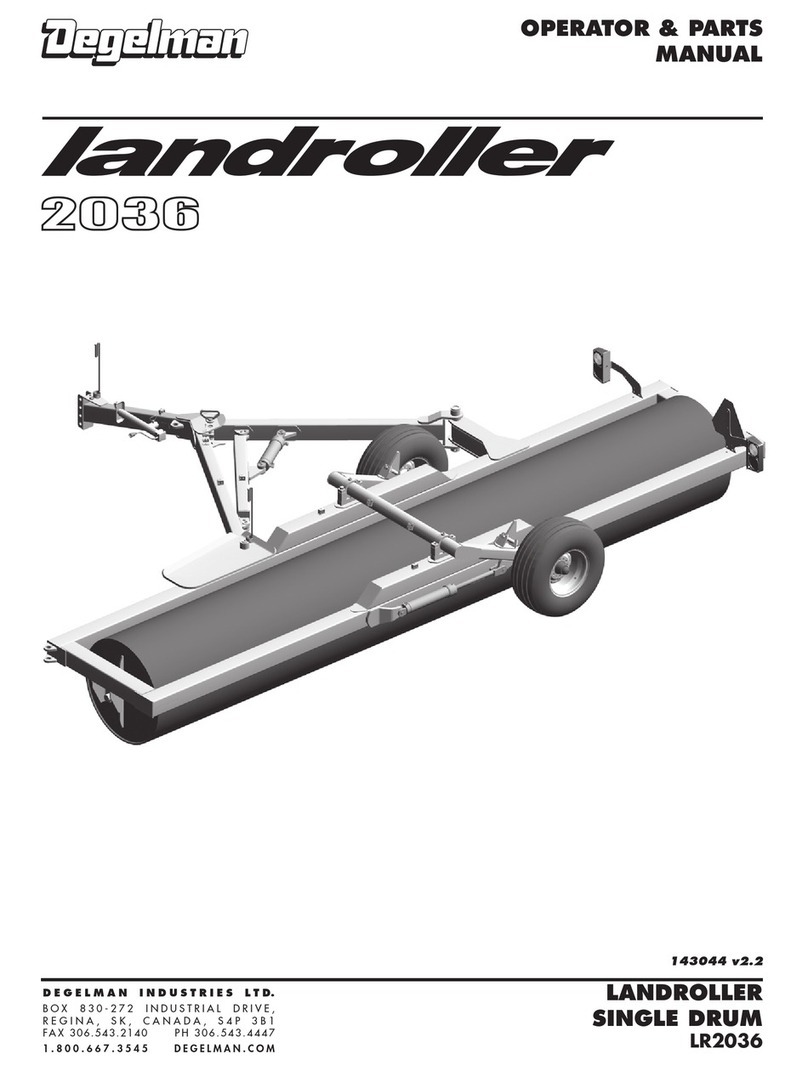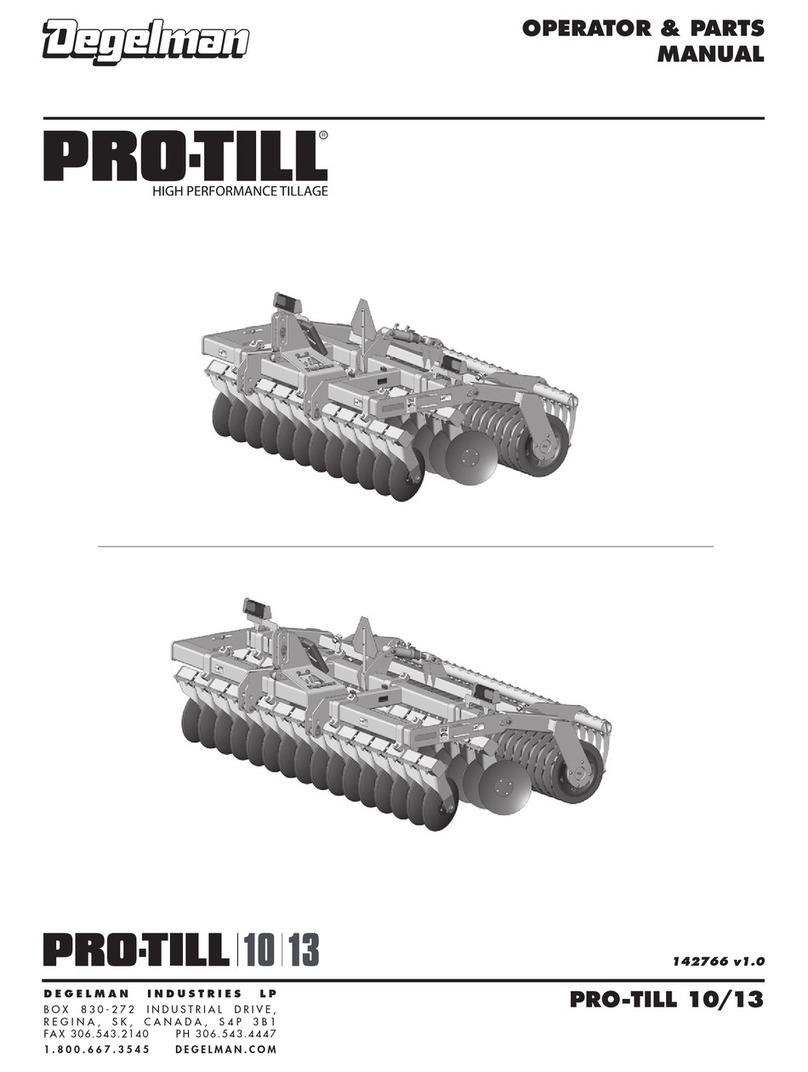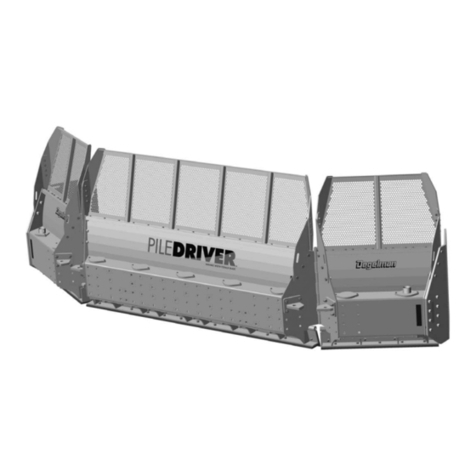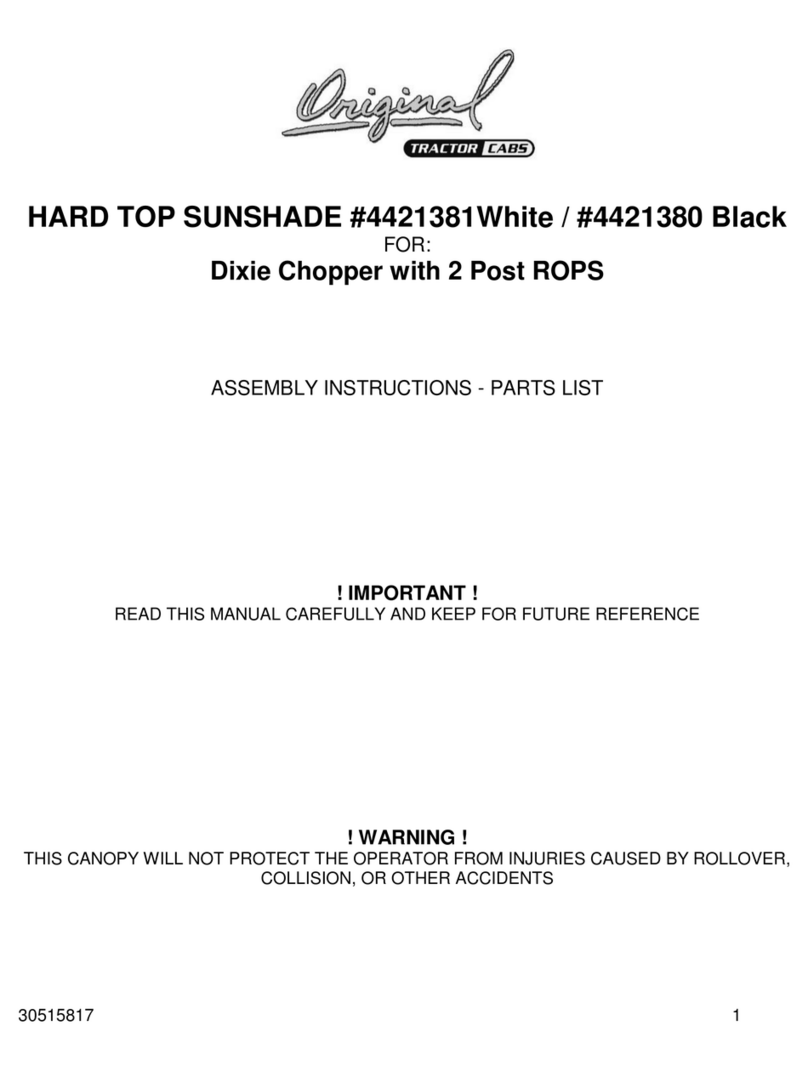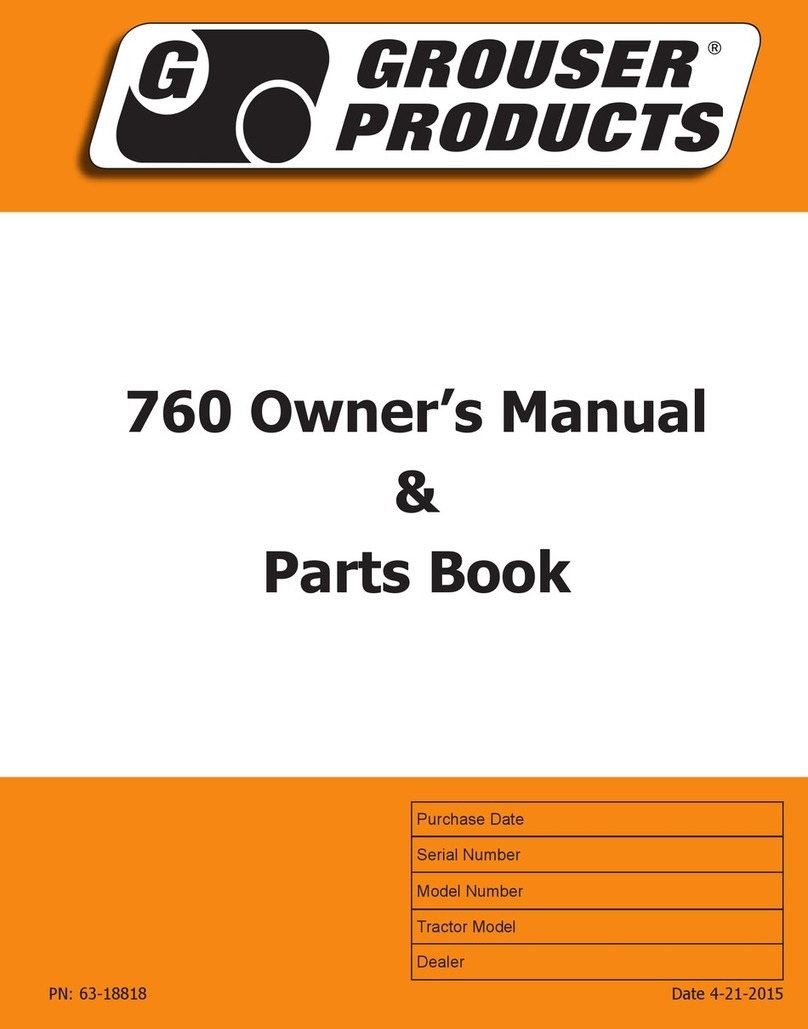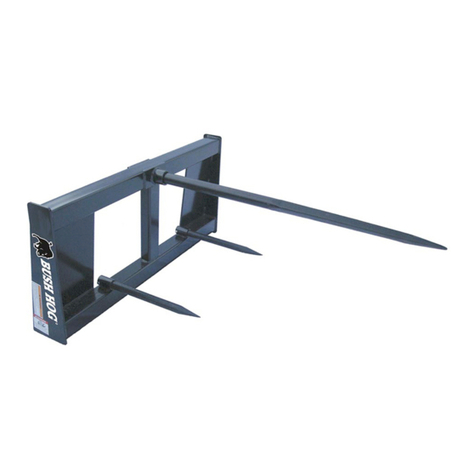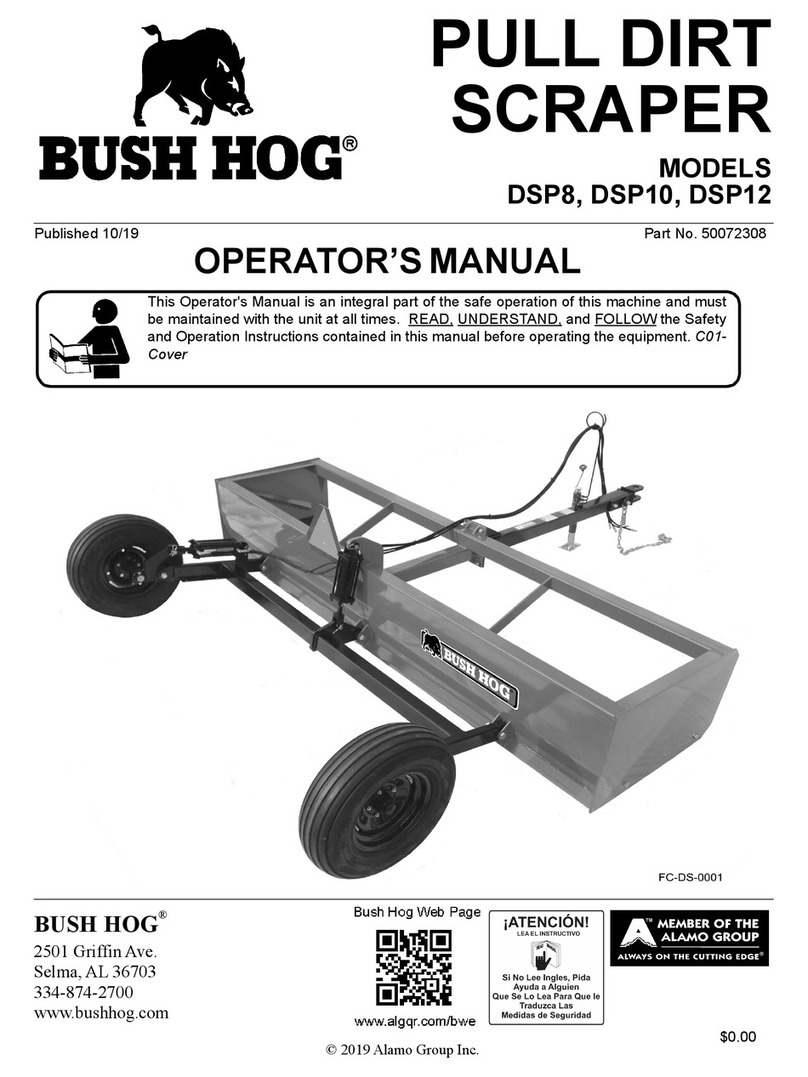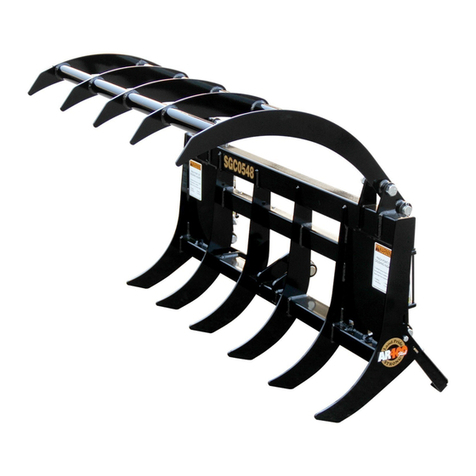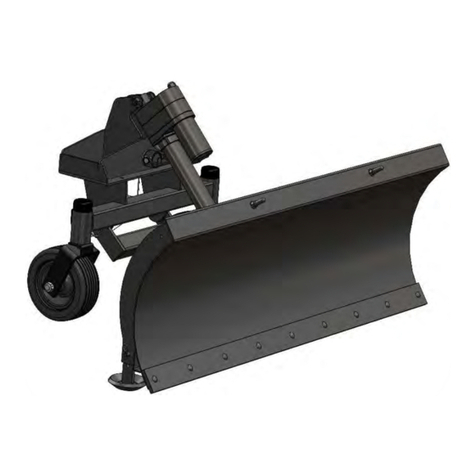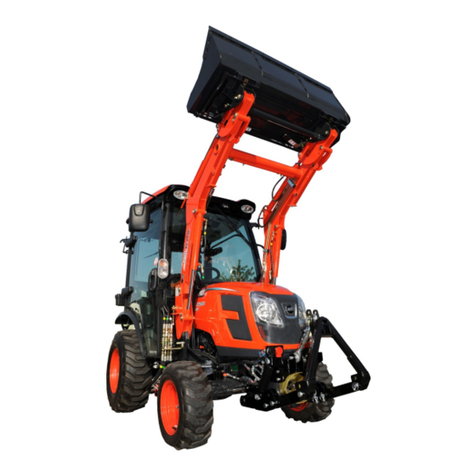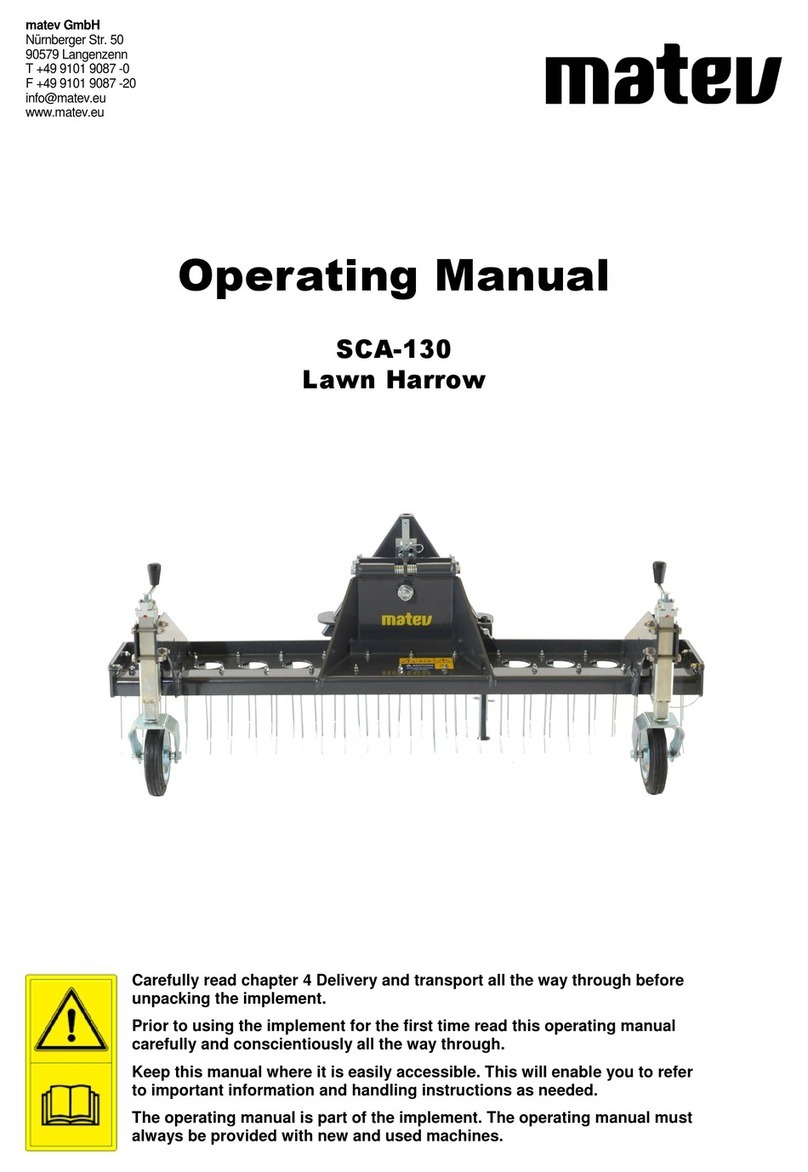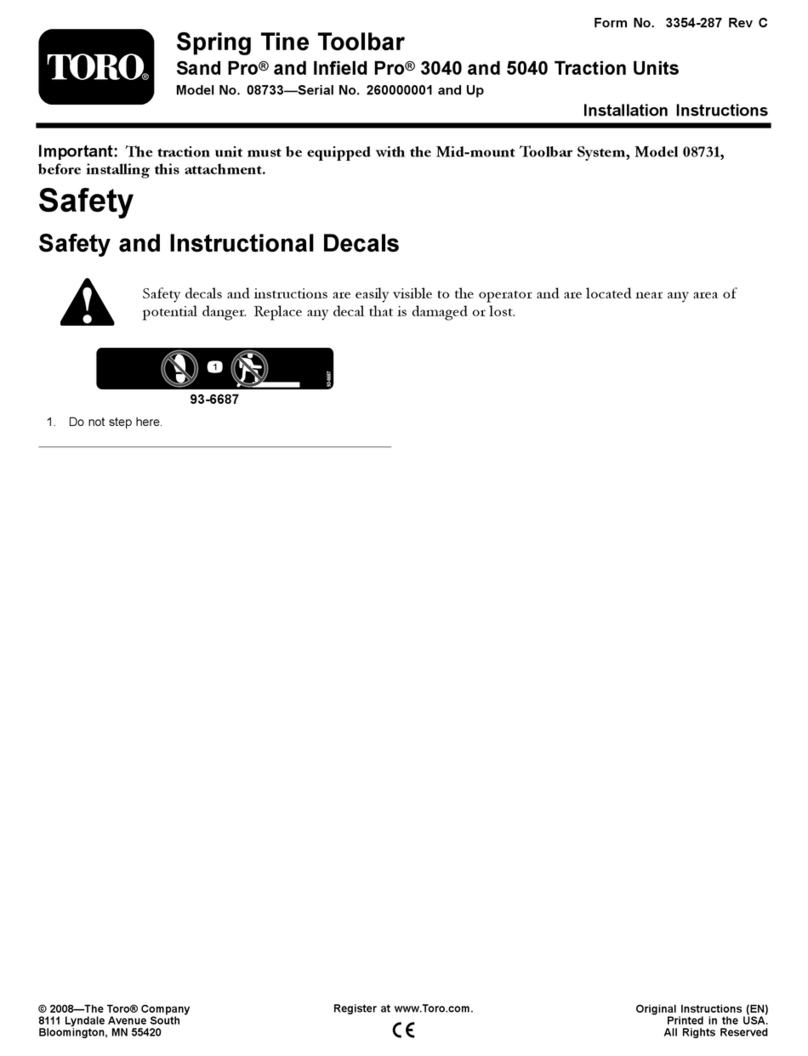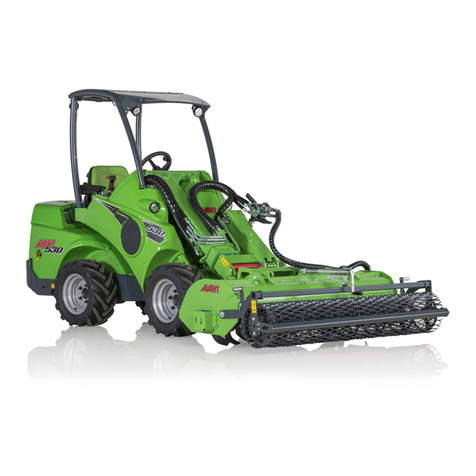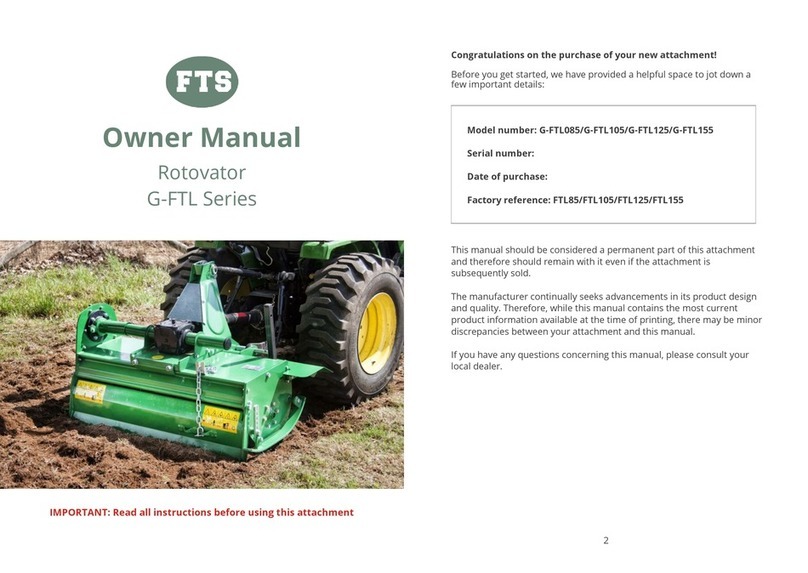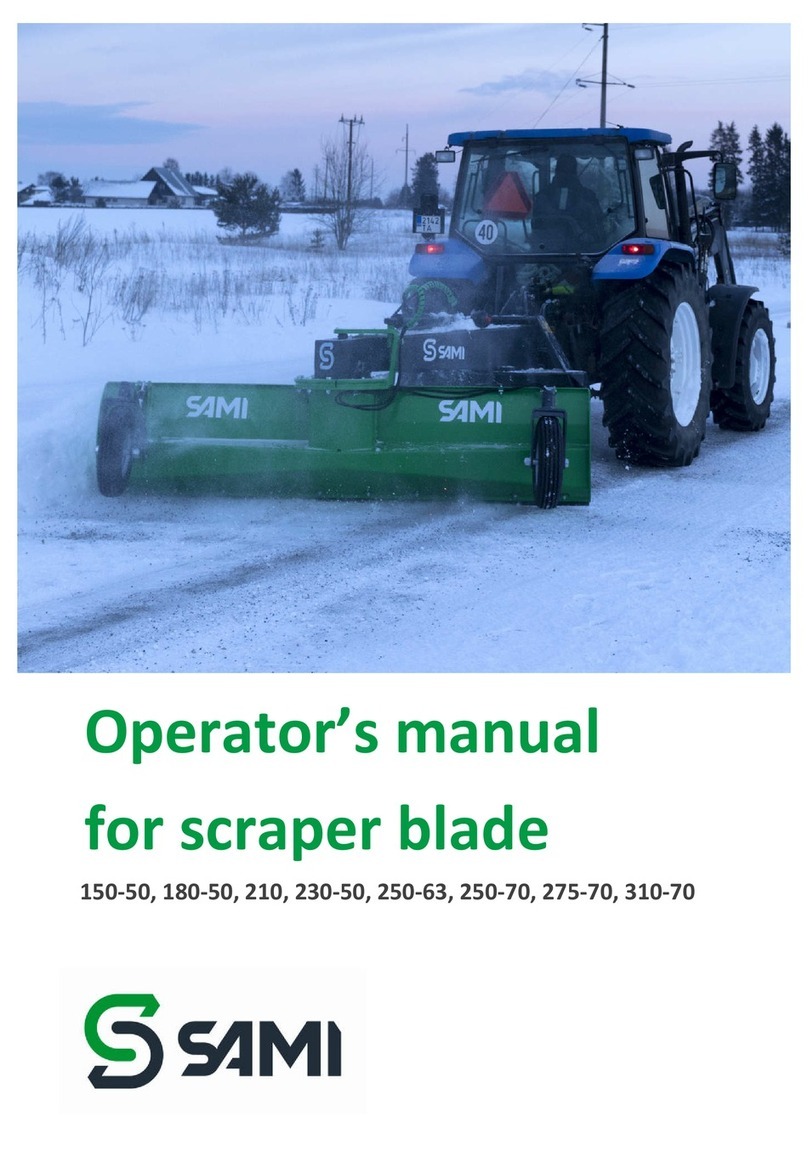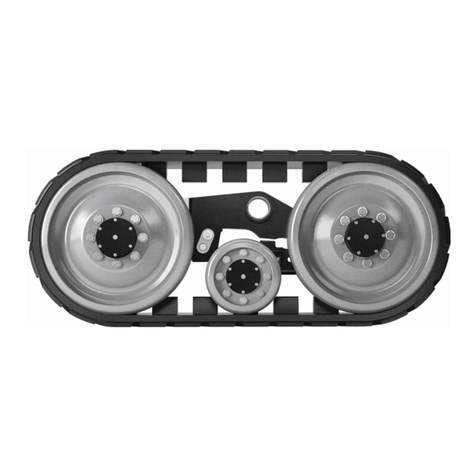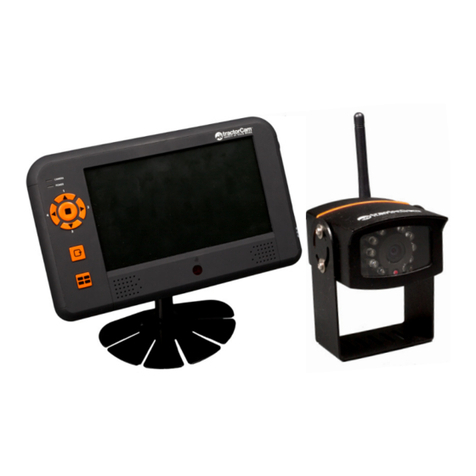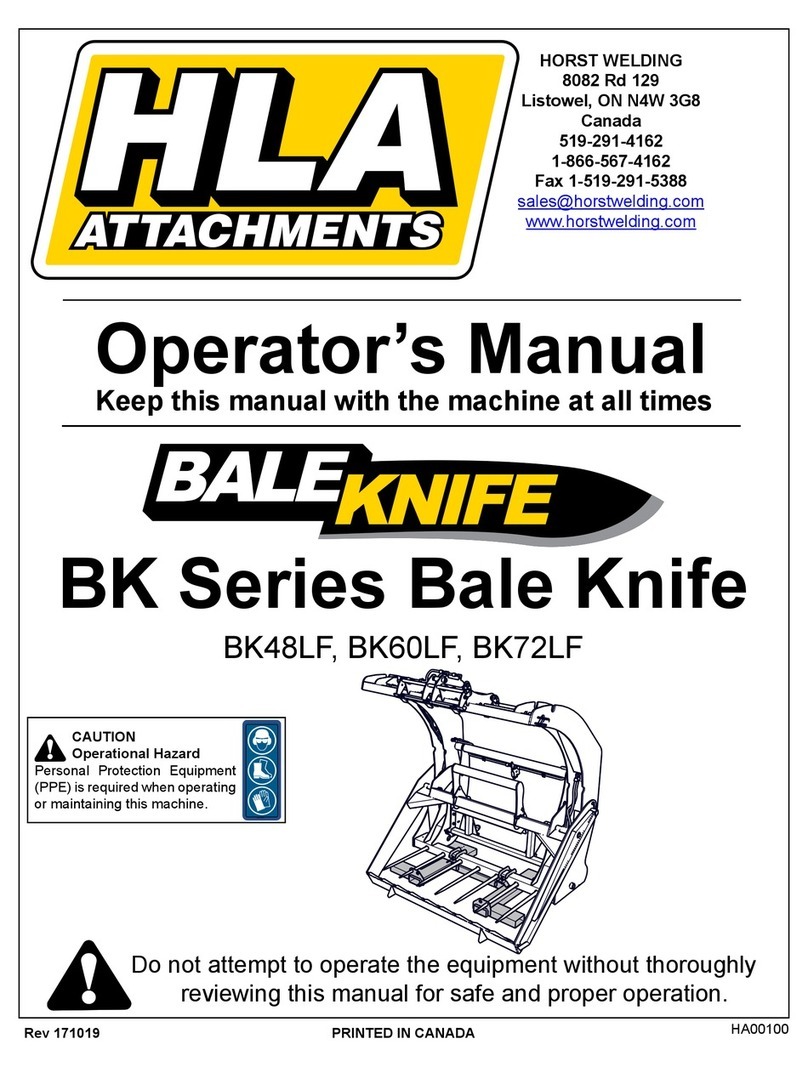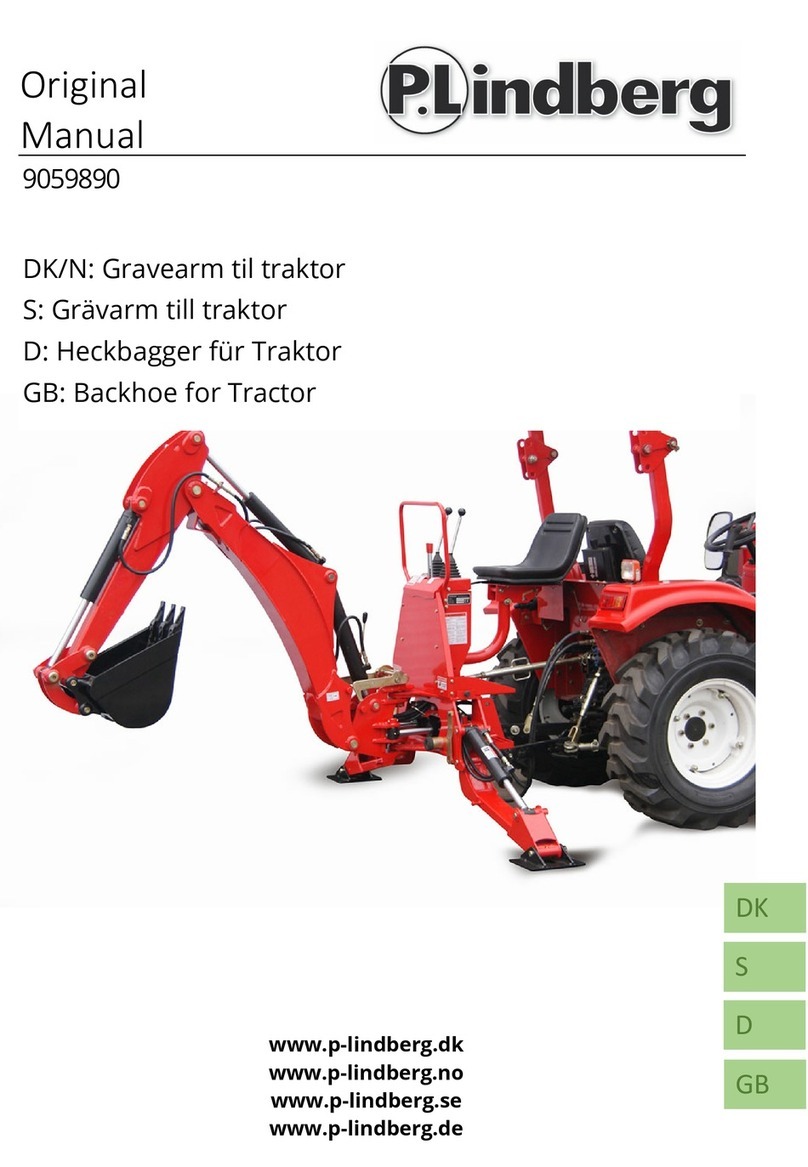
-4-
143351 - 69/7200 Series (12-May-2017)
Operation
TRACTOR PREPARATION
1. Wheel Spacing
Important: To avoid possible damage from
over stressing tractor axles, use no tire combination
which results in overall width greater than the
width of the angle blade.
Important: Before beginning operation, turn
the wheel fully to the right and left to be sure there
is sufficient clearance between the tires and the
angling cylinders. If necessary, move the wheels
to a wider setting to provide clearance. See your
Tractor Operator's Manual.
2. Rear Wheel Weight and Tire Inflation:
Add necessary rear end weights for efficient
operation and safety. Any of the cast-iron weights
recommended for your tractor or liquid in the tires,
may be used for necessary ballast. Be sure the
weight is distributed equally on each rear wheel.
Inflate front and rear tires to proper pressure as
recommended in the Tractor Operator’s Manual for
heavy front-mounted implements.
3. Checking Hydraulic Oil Level:
Check the oil level in the tractor hydraulic system
daily. Refer to your tractor operator's Manual for
Instructions. Keep the oil supply up to the proper
level. Before checking oil supply, fully extend
and retract angle and lift cylinders 3 - 4 times and
return the blade to the ground.
ATTACHING THE DOZER BLADE
NOTE: Please refer to the assembly section of this
manual - for full instructions for attaching your
specific tractor and blade model.
BLEEDING THE HYDRAULICS
Before beginning operation, bleed the hydraulic
system to remove any air. To do this, cycle the
hydraulics several times by holding the cylinder
fully extended for several seconds. This will cause
any trapped air to be purged from cylinder.
COLD WEATHER OPERATION
To assure smooth operation in cold weather, cycle
the cylinders several times to warm the oil in the
hydraulic system.
TO THE NEW OPERATOR OR OWNER
The Degelman Dozer Blade is a push type tractor
attachment designed primarily for excavating,
levelling and filling of dirt, snow and silage.
It is the owners or operators responsibility to read
this manual carefully to learn how to operate
the machine safely and how to set it to provide
maximum efficiency. Safety is everyone’s business.
By following safe operating practices, a safe
environment is provided for the operator and
bystanders.
The manual will take you step-by-step through
your working day. By following the operating
instructions in conjunction with a good
maintenance program your machine will provide
many years of trouble-free service.
BREAK-IN
Although there are no operational restrictions on
the Dozer Blade when it is new, there are some
mechanical checks that must be done to ensure
the long term integrity of the unit. When using the
machine for the first time, follow this procedure:
A. Before using:
1. Read Operator's Manual.
2. Lubricate all points shown in the
Maintenance Section.
3. Check all bolt tightness.
B. After operating for 2 hours:
1. Check all hardware.
2. Check all hardware tightness.
3. Check all hydraulic system connections.
Tighten if any are leaking.
C. After operating 10 hours:
1. Repeat Step B.
2. Go to the service schedule as outlined in the
Maintenance Section.
PRINCIPLES OF OPERATION
The dozer blade consists of a blade/cutting edge
unit attached to a pivot-main frame combination
suspended from the tractor by the front and side
mount brackets. By driving the tractor forward
with the blade either straight ahead or angled,
and allowing the cutting edge to run just under the
ground surface - dirt, silage or snow is relocated
as desired.
